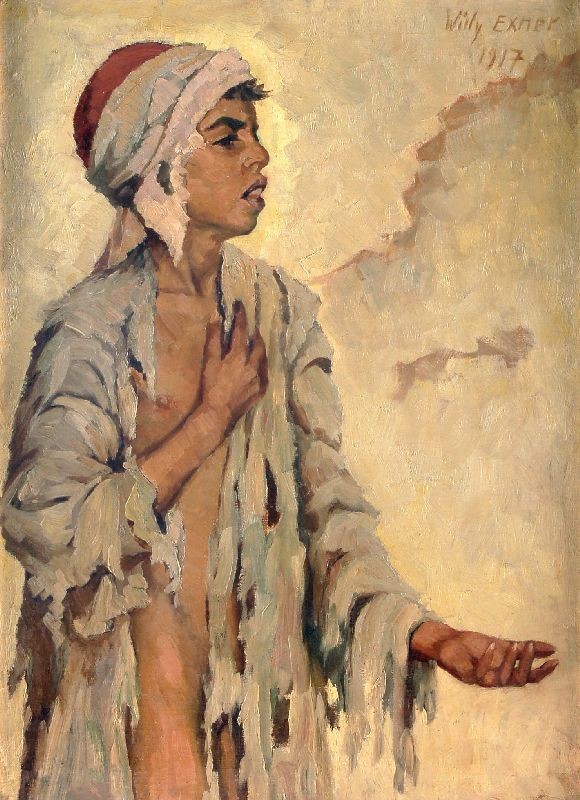Born in 31st of January 1888, died on 10th of April 1947, Willy Exner was one of the most controversial German war painters in the First and Second World Wars. He started studying art in Breslay from 1902 until 1906. He made study trips to North Germany and Switzerland, and later in 1910 he was a full-time student at the Royal Art Academy in Breslau. In 1915, he became an official war painter. He started to travel to various front lines from 1917 where he painted many portraits of soldiers and officers. He was seriously wounded at the end of the First World War, and he remained crippled because of that wound. In the late 1930s, Willy Enxer started to paint German National Socialistic motives. He has painted in 1936 one of the most famous and most sold portraits of Adolf Hitler. He also painted several National Socialistic propaganda paintings, as well as the portrait of Hermann Gohring. Later during the Second World War, he painted another well-known portrait of Hitler in 1943. After the war he was accused and tried for collaboration with the Nazis. Willy Exner denied the accusation, as a consequence of the stressful trial , Will Exner fell got cancer and died in 1947. After his death, all charges have been dropped from his name.
Willy Exner visited Skopje in 1917. He has made several watercolors and drawings of beggars and gypsies in Skopje. One such drawing is in Wertheim city archive. Another watercolor titled “Oriental Beggar 1917” was sold by the auction house Schmidth Kunstauktionen Dresden, Germany on 15th September 1917 (lot number 54)
